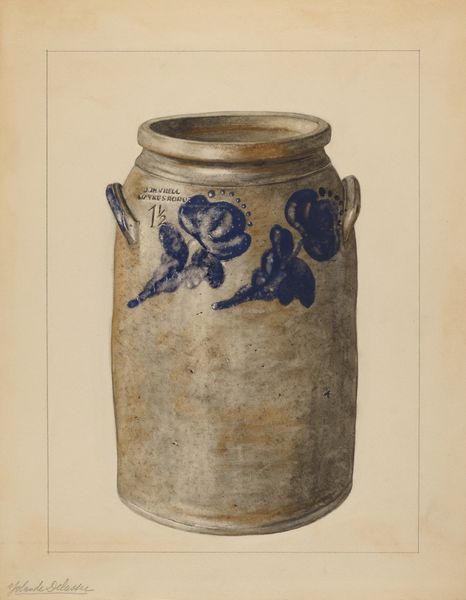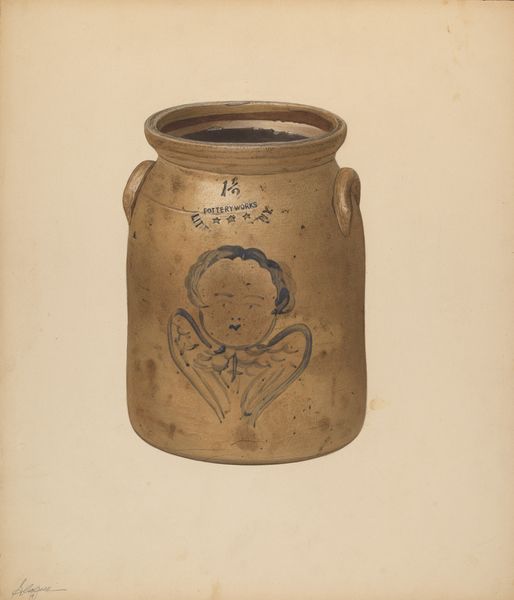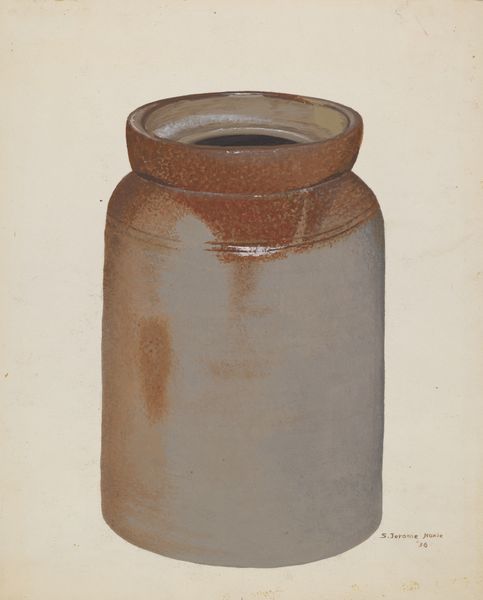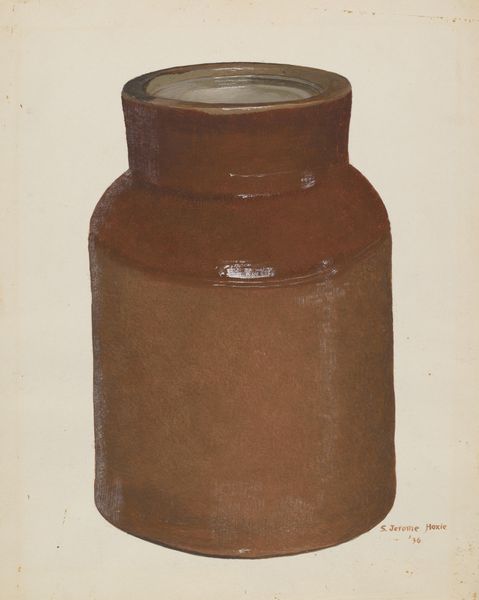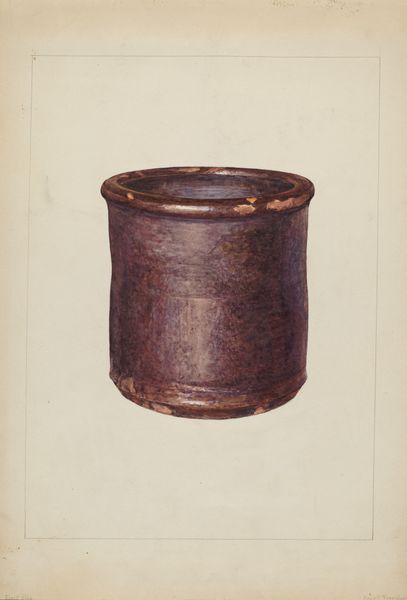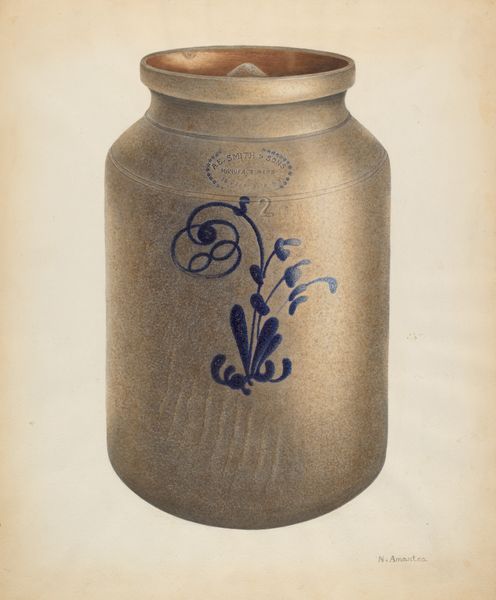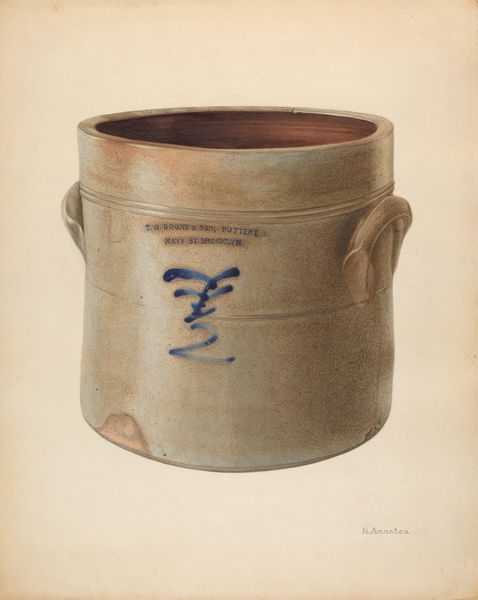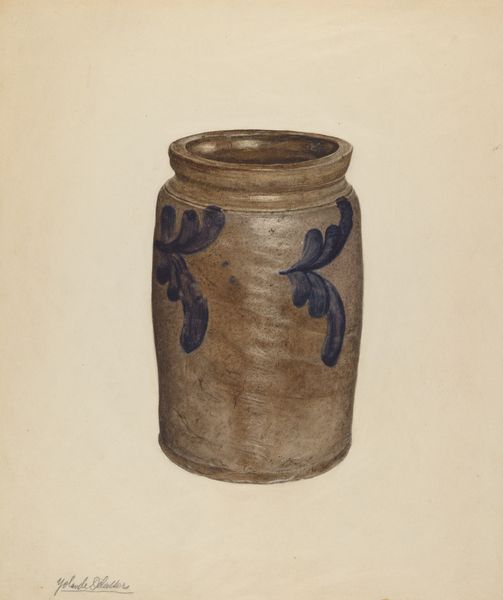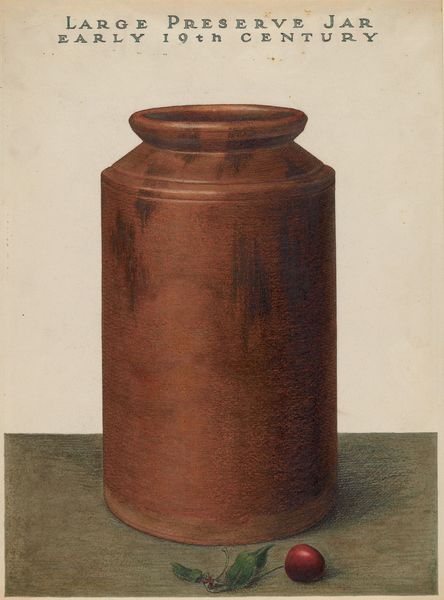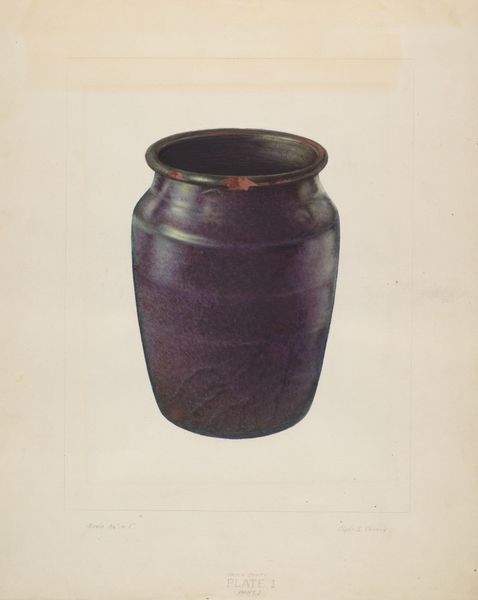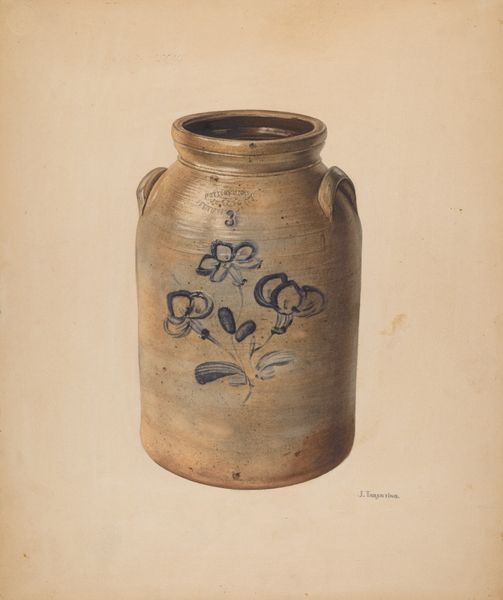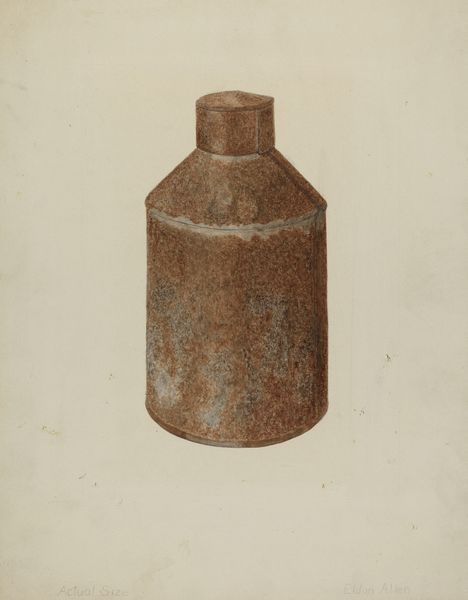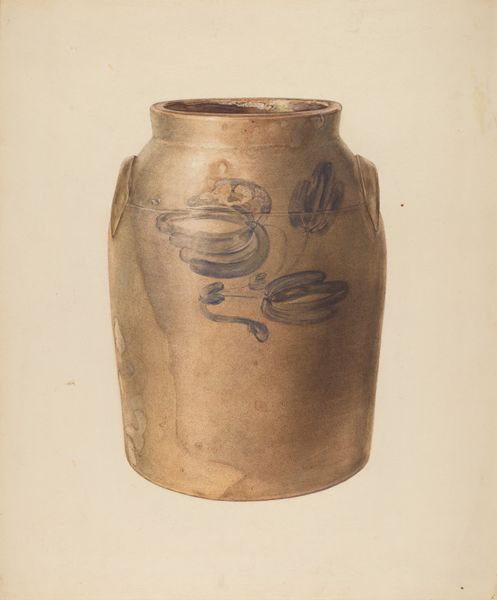
drawing, watercolor
#
drawing
#
charcoal drawing
#
watercolor
#
watercolour illustration
#
watercolor
#
realism
Dimensions: overall: 29.2 x 23 cm (11 1/2 x 9 1/16 in.) Original IAD Object: 9" high; 4 3/8" wide
Copyright: National Gallery of Art: CC0 1.0
Editor: Here we have Yolande Delasser’s “Preserve Jar,” created around 1953, rendered in watercolor and drawing. The jar itself seems so commonplace, but somehow, captured in this style, it feels significant. What social narratives do you see at play here? Curator: It's fascinating how Delasser elevates this everyday object. It speaks to the post-war interest in celebrating the ordinary, moving away from the grand narratives often associated with art history. This jar, likely used for home canning, connects to a broader trend of domesticity and self-sufficiency popular during that period, particularly amongst women. Editor: It’s interesting that you point out that this touches upon domesticity, especially considering that it also reads “Plumbs”. Do you think the association between the word being there would influence its perception of being connected to domesticity? Curator: Absolutely. The "Plumbs" inscription, along with the decorative emblem, highlights a specific use and adds a layer of personal touch, pointing to specific historical realities and domestic roles. I am intrigued about how art intersects with public consciousness regarding home production, considering mass production was becoming accessible to households at that time. Delasser appears to emphasize the worth of hand-crafted processes. What are your thoughts on the watercolor illustrations serving as archives, documenting past art trends? Editor: I hadn't thought about it that way, but the way she frames this jar seems to serve as preservation of values as well as archiving her techniques of illustration. It also touches upon her ability as an artist to memorialize what other may oversee in day-to-day objects. It's given me so much food for thought. Curator: Indeed, this piece reflects the social and economic landscape of the time. It prompts a closer look at how seemingly simple items can become potent symbols of cultural identity.
Comments
No comments
Be the first to comment and join the conversation on the ultimate creative platform.
